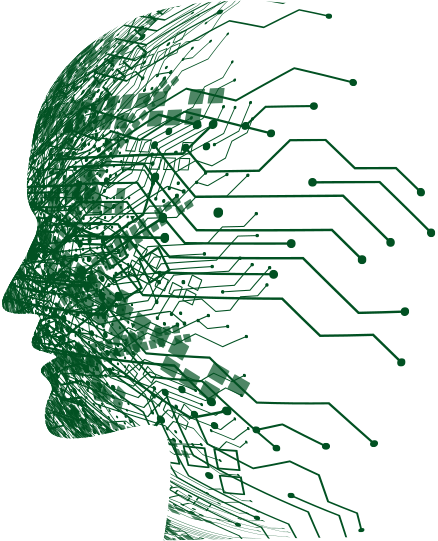Artificial Intelligence
& Machine Learning
Enhanced Navigation Mastery
with AI and ML

Real-time navigation is a multifaceted field encompassing numerous technologies, including search algorithms, route optimization, road network graph generation, traffic data analysis, and GPS error correction, to name a few.
Using the potential of AI and Machine Learning, we have pioneered several areas:

Search
AI-based search engine, capable of storing, searching, and analyzing extensive datasets in near real-time using natural language processing and big data techniques.

Routing
Routing, the process of finding the optimal travel route, is vital for applications like maps and delivery services.
Underlying Road Network Graphs
This data structure represents roads and intersections. Each road segment is a node, and each intersection an edge.

GPS Drifts Removal
GPS drifts are random deviations of GPS coordinates that occur over time and compromise the quality of navigation in the form of incorrect positioning. Our AI-based algorithm rectifies GPS inaccuracies in real-time.
Public Transport
Introducing a first-of-its-kind in Pakistan, our GTFS-based engine provides public transport information, including routes, schedules, fares, and geographic transit details.
Fuel Cost
Our in-house algorithm factors in several parameters including traffic conditions, distance, vehicle type, engine capacity, and idling time to estimate fuel costs per trip.
Use Cases – Demonstrating Learning from Experience
Big data is the backbone of any navigation app. Its accuracy hinges on timely updates, collection, and digitization. For any navigation app to be relevant, the data sets need to be updated, collected, and digitized on a daily basis.
Here are some use-cases that demonstrate our mastery over AI/ML algorithms:
Category Classification
Deep learning algorithms expedite data insertion by predicting and assigning accurate categories to Points of Interest (POIs). This model is trained on millions of categorized POIs from the TPL database.
Road Extraction from Satellite Images
Deep neural networks automatically extract road information from satellite imagery, enabling more frequent road network updates compared to traditional manual data collection methods.
Image Text Detection
Advanced Computer Vision algorithms identify and extract video frames containing POI labels from geo-tagged video surveys. These video surveys have locational information, including the POI labels embedded in.
Address Standardization and Validation
TPL Maps is developing an AI/NLP engine to understand the structure and variations of different address types. Application of address standardization and validation techniques will significantly improve the customer engagement process for any business venture.

TPL Maps is a rapidly expanding and pioneering technology startup in Pakistan, that stands at the forefront of innovation. Our mission is to redefine the significance of location insights for enterprises and revolutionize mobility for consumers. With a relentless drive, we tap into the potential of geospatial data and analytics to create profound and quantifiable value across all facets of enterprise operations. Simultaneously, we are dedicated to crafting Pakistan’s sole native navigation app, meticulously capturing the intricacies of our diverse landscape.
What we do
Who We Are
+92 21 3713 0227
20th Floor, Sky Tower – EastWing Dolmen City, HC-3, Block 4 Abdul Sattar Edhi Avenue Clifton, Karachi.
TPL Maps. All Rights Reserved © 2023
